Deinfluencers are hurting Dyson and Stanley. This is how they should respond
Deinfluencing isn’t just a new play for attention from influencers, Swayable’s Scott Fedonchik proves it works and argues that brands need a response. Today we look how Dyson and Stanley should respond.
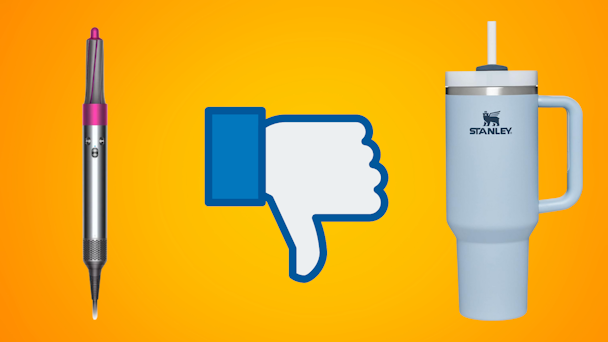
Brands are expected to spend $7bn on influencer marketing in 2024. But a rising generation of creators aims to build audience trust by adopting a different approach: Convincing people not to buy products.
Deinfluencers are social media creators who discourage users from spending money on viral items rather than promoting them. They often refute influencer recommendations, share their own negative experiences, and critique items and companies they find overhyped. Last year, as deinfluencers erupted into the mainstream, TikTok posts tagged #deinfluencing drew more than 750 million views.
As deinfluencing gains popularity, Swayable researched the potential risk this trend poses to retailers. The findings indicate that deinfluencers can deter consumers from purchasing and seriously damage a brand’s reputation.
Advertisement
To safeguard their integrity, brands must develop a strategic response to deinfluencing content that addresses explicitly persuasive, high-reach posts that can turn viewers into skeptics.
TikTok deinfluencers v Dyson and Stanley
To understand how deinfluencing content can affect brands, we conducted randomized controlled trials focusing on consumer sentiment for two viral products: The Dyson Air Wrap and the Stanley Quencher Tumbler.
In separate trials looking specifically at Dyson or Stanley, each respondent was randomly allocated to either a control or a test group. They were then shown a TikTok and asked questions that measured their positive feelings toward the respective company (brand favorability) and their willingness to buy the mentioned product (intent to purchase). We analyzed the gap between the control group’s baseline responses and the test groups’ content-influenced responses to measure persuasion. We found that trending deinfluencer TikToks negatively impacted both brand favorability and purchase intent among participants.
Advertisement
As a creative testing platform that measures how effectively media content changes opinions, we’re constantly investigating materials that make an argument – and their success rates. So, it’s significant that some of the videos in this study caused greater drops in brand favorability and purchase intent than any of the 1,500 assets we tested in 2023. That means they’re especially compelling.
These results were true across all demographics: In most cases, segment results reflected overall data.
Dyson. 18-24 deinfluencing versus wider TikTok
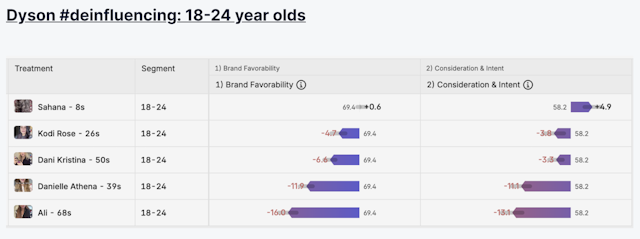

Stanley. 18-24 deinfluencing versus wider TikTok

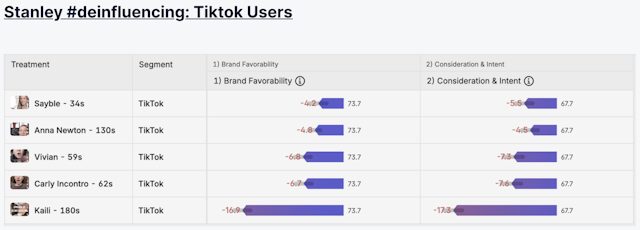
The most impactful deinfluencer posts caused a 20-point dip in brand favorability and a 17-point decrease in purchase intent. More specifically, four out of the five Dyson Air Wrap deinfluencer posts damaged participants’ perception of the brand. Two were highly consequential, inspiring 10-point slashes to brand favorability.
Similarly, all five Stanley Tumbler deinfluencer videos hurt both brand favorability and purchase intent. One of these posts was highly impactful, reducing both metrics by 20 points.
Length, high engagement, and dupes don’t guarantee persuasion
Our study suggests that deinfluencer messaging is highly effective among consumers. But what makes these creators so convincing?
The length of deinfluencer posts didn’t seem to impact viewers’ opinions: While some of the longer ones proved persuasive, others weren’t.
Suggested newsletters for you
High levels of engagement didn’t necessarily undermine a brand or product, either. In fact, the three most effective deinfluencing posts in the study had fewer than 2,000 likes.
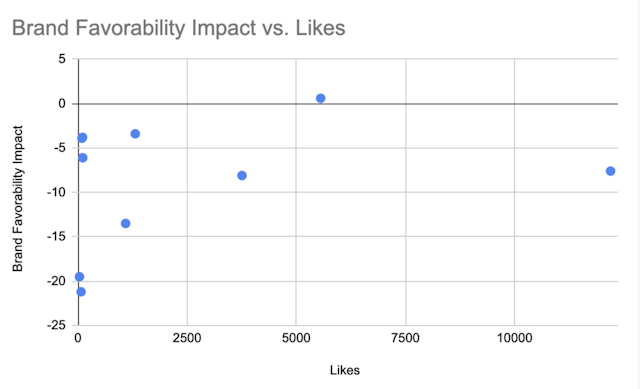
TikToks that mentioned competing products caused a measurable dent in brand favorability and purchase intent, with a three to six-point drop.
The cost of poor quality and bad customer service
Length, engagement, and mention of “viable dupes” (affordable duplicates) didn’t drive persuasion. But, deinfluencer videos focused on product quality and customer service issues had significant success winning people over.
A 28-year-old woman from Tennessee noted that when an attachment fell off a creator’s device in one of the Dyson TikToks, it left an impression: “It should definitely be sturdier.” A 30-year-old woman from North Carolina echoed this disapproval, saying, “When the lady said that Dyson had not responded [to her customer service queries], it was very disappointing as a customer.”
In one of the Stanley TikToks, a deinfluencer called out how she received subpar customer service from the brand. Describing what she took away from the video, a 49-year-old participant said, “The Stanley Cup wasn’t worth the $50 because it scratches easily, leaks and doesn’t hold cold.” She also mentioned that the brand “doesn’t uphold warranty,” ultimately deciding its “customer service sucks.”
How and when to build an effective deinfluencer strategy
Deinfluencers can meaningfully sway audiences. However, not all videos require a response from brands. As we’ve seen, deinfluencing videos can have varying levels of influence, and high-impact content usually highlights quality concerns and customer service problems.
The following framework can help brands decide when to address #deinfluencing content and when to focus their attention elsewhere. More specifically, brands should target very persuasive, high-reach content to ensure they’re confronting critical threats to their business.
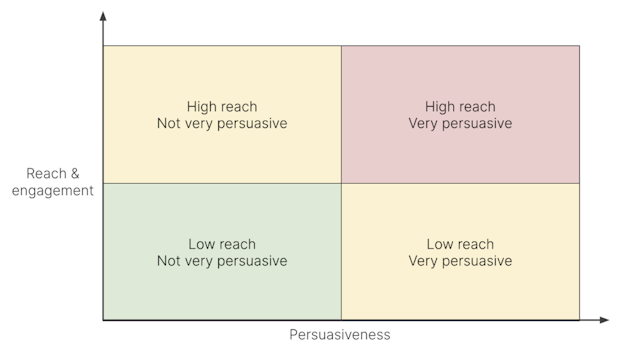
For Dyson and Stanley, this might look like directly engaging with deinfluencers to remedy the product and customer service problems they surfaced in their content since we know these videos have the most significant impact on shoppers. In the long term, it can also involve a more holistic, proactive approach that builds this feedback into their larger production and support processes.
By building a thoughtful response plan into their marketing strategies, one that targets responding to high-impact deinfluencing content, brands can successfully position themselves to weather critique of all kinds, ensuring consumers’ brand favorability and purchase intent stay intact along the way.

